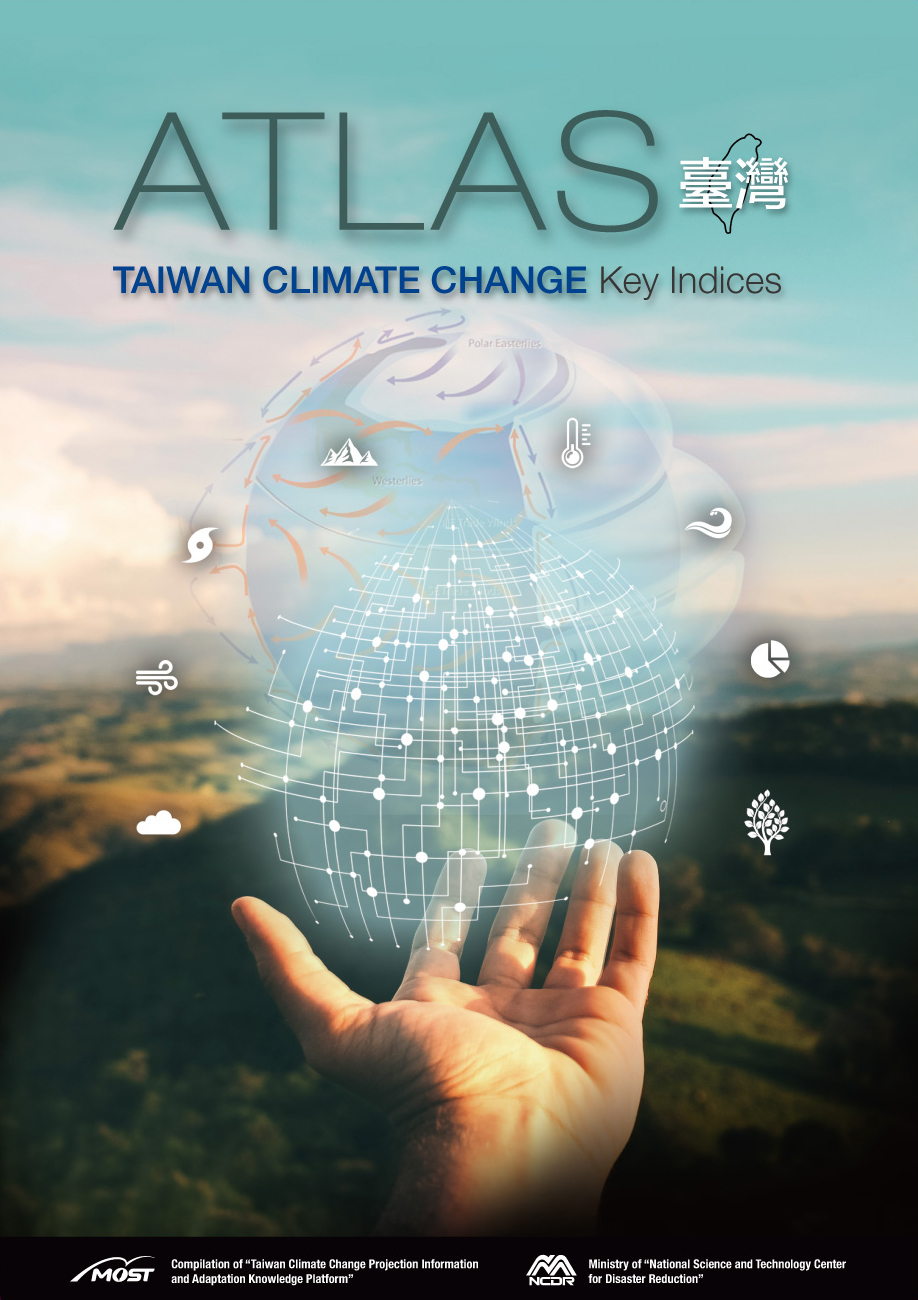Data Service / Atlas of Taiwan Climate Change Key Indices

Atlas of Taiwan Climate Change Key Indices
This atlas presents a series of figures featuring key climate change indices. The indices, established by the Taiwan Climate Change Projection Information and Adaptation Knowledge Platform (TCCIP), are selected from World Meteorological Organization (WMO) designated the Climate Change Detection and Indices (CCDI). Commonly concerned key climate indices are included, such as extreme temperatures, rainstorm, and drought…, etc.
The atlas features figures regarding the aforementioned key climate change indices under different global warming scenarios defined by the Intergovernmental Panel on Climate Change (IPCC). The figures are categorized according to different spatial units, including countrywide, regional (i.e. northern, central, southern, and eastern Taiwan), and countywide scales. The Atlas of Taiwan Climate Change Key Indices aims to assist readers in understanding, referencing, and evaluating information regarding the projected future climate in Taiwan.
Data collection and processing
The data in the atlas consists of observed data and model data, which features daily observations with 5km*5km grid established by the TCCIP phase III and Coupled Model Intercomparison Project Phase 5 (CMIP5) model outputs, respectively. After conducting statistical downscaling on the data, the ensemble average of each group scenario is calculated and analyzed. Detailed description of models is included in the frequently asked questions (FAQs) section.
Baseline period and change rate calculation
The referred baseline period in the altas was 1986–2005. The projected climate change rate in the 21st century is divided into near-term (2016–2035), mid-term (2046–2065), and long-term (2081-2100) periods, respectively.
The change rate calculation method is explained as follows. For each climate index, do the calculation for each grid point. Then subtract the mean value of that point in the baseline period (i.e. 1986–2005) from it and get the difference for the projected period. Subsequently, divide the difference by the mean value in the base period (i.e. 1986–2005) to get the change rate (%) for each grid point. Lastly, the mean change rate for each region is calculated.
Space division
According to Central Weather Administration (CWA), Taiwan can be separated into four regions or 18 cities/counties. The four regions and the consistence of cities/counties are northern (Keelung, Taipei, New Taipei City, Taoyuan, Hsinchu, and Miaoli); central (Taichung, Changhua, Nantou, Yunlin, and Chiayi); southern (Tainan, Kaohsiung, and Pingtung); and eastern (Yilan, Hualien, and Taitung) Taiwan. Additionally, this atlas features information on the Penghu, which is classified as an offshore island region. However, this atlas lacks related information for Kinmen and Lienchiang.